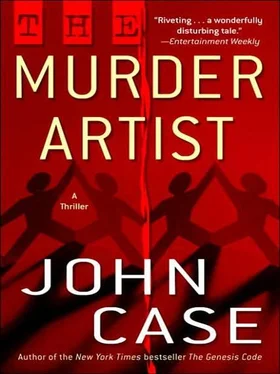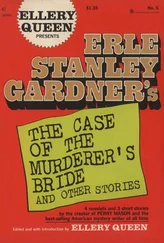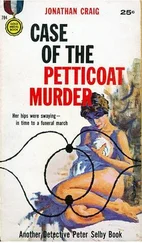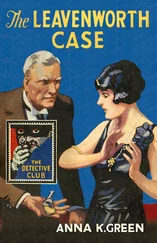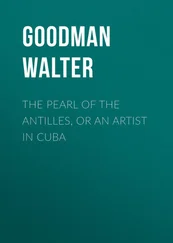“I see what you mean.”
“A child has other wonderful attributes as an assistant. He’s small and can fit into smaller spaces. But mostly, he’s far more vulnerable than a woman. Plus, he wears a mantle of innocence, so the audience never thinks of a child as in on it, so to speak, as part of the deception. You can’t employ children now because of legal constraints, so Carrefour did the next best thing. He employed a young man – quite slight and youthful in appearance, but actually of legal age.”
“Interesting. So, how did the act go?”
“The basket trick was only the finale of Carrefour’s hour, mind you. There were many other effects and illusions. But in the basket trick itself, somewhere toward the end of the act, the boy blunders, does something clumsy with one of the props or acts defiantly.
“He’s forced into the basket as a punishment by the master. Often the basket is placed on an openwork pedestal so the audience can see there’s no trapdoor or anything of the sort, no way for the child to escape. So” – DeLand claps his hands together – “the boy’s inside and the magician is carrying on with the rest of his act, but the boy won’t shut up, just keeps whining and complaining. Finally, the magician loses his temper. He’s in the midst of some effect requiring swords and he impulsively picks one up and thrusts it into the basket. The boy cries out – ‘That really hurt! You really stabbed me!’ – but this just enrages the magician further. With bloodcurdling screams emerging from the basket, the magician thrusts more swords into it, crisscrossing them in such a way that it seems no one inside could survive. He’s in a fury, you see – interrupted in the midst of the ring trick or whatever. He returns to his act, greeting the screams of the boy with derision. ‘Go ahead and scream, it won’t help you. I’m not impressed. My Lord, what a baby.’ The screams weaken, turn into moans, and then finally, there’s silence.
“The audience is nervous. The magician heaves a sigh of relief and returns his full attention to his act – materializing rabbits, joining and separating rings, doing other tricks in his routine.
“The audience becomes concerned at the appearance of a pool of blood gathering beneath the basket. At their shouts – a plant is in the audience in case they don’t do their job here – the magician stops what he’s doing and crosses to the basket and sees the pool of blood. He yanks off the top of the basket and he’s overcome with remorse. It takes a good actor to pull this off, mind you, but Carrefour is a good actor. He begins the process of removing the swords, a gingerly process with much hesitation and wincing and gritting of the teeth. Then the magician exhorts the audience to help him bring the assistant back to life.”
The skin on my neck begins to crawl. I’m thinking of the detective from Big Sur, talking about the Ramirez twins. He was telling me that they’d put the pieces of the one kid back together, that the kid had been stabbed multiple times, run through .
And then I remember exactly what he said: The kid was a pincushion .
“You all right?” DeLand asks.
“Go ahead,” I manage.
“Well, the thing about the basket trick – the swords are real, the thrusts hard. The trick works because the assistant has rehearsed how to squeeze his body here and there on cue and in sequence, so he’s never touched. You can see why children are not permitted to perform such tricks nowadays. Like many of the old tricks, the basket trick can go wrong.”
“Hunh.”
“Some illusions are very dangerous. The basket trick relies on absolute adherence to a series of moves by two different individuals. There’s no margin of error. Bullet catching is another risky one. It used to be a standard part of many acts, but it’s quite dangerous. A famous magician died performing it in London in 1930 or so.”
I’m only half listening as DeLand goes on. Boudreaux performed the sawing-the-lady-in-half illusion with the Gabler twins, the basket trick with the Ramirez twins. But what the Sandling boys told me didn’t sound like preparation for either of these tricks.
“Penn and Teller,” DeLand is saying, “do a simultaneous bullet catch – but Houdini, for instance, for all the different ways he put himself in harm’s way, never caught bullets. His role model, Robert-Houdin, the very famous French magician of the mid-eighteenth century, performed the bullet catch quite famously in helping to quell an uprising in Algeria.”
“Really?”
“Oh, yes. He was sent to Algeria by the French government because some Marabouts were fomenting an uprising, using simple bits of magic to stir up the locals. Robert-Houdin staged – in open air – a demonstration of his powers, and by extension the powers of the French – to show the locals, you know, whose magic was more powerful. The pièce de résistance of Robert-Houdin’s demonstration occurred when he was challenged to a duel by one of the marabouts. He caught the bullet fired at him in his teeth and then discharged his own still-loaded gun at the whitewashed wall of a building abutting the street where the duel took place. Upon the bullet’s impact, the white wall was stained with a huge crimson splash of blood. That was the deal breaker for the Algerians. Robert-Houdin’s French magic was more potent than the Marabouts’ magic. The Algerians lost faith in the rabble-rousers and the resistance faded.”
“The French government hired him?”
“Oh, there are more ancient and far more recent examples of governments hiring magicians. Our CIA, for instance, hired the magician John Mulholland to school spies in how to avoid detection. Mulholland did demonstrations, workshops, and he wrote a series of manuals for the Agency.”
“Manuals?”
“On misdirection, sleight of hand, surprise.”
“Really!”
“Think about it. What do spies do? It’s all about illusion and deception. A spy appears to be something or someone he or she is not. A spy has to perform tasks in such a way as to remain undetected. What better skills to have for these tasks than sleight of hand and techniques of misdirection? If you can get the fellow to look the other way, or simply not to notice you…” He shrugs.
As interesting as this is, I want to return DeLand’s attention to Carrefour. “So – the basket trick was dangerous.”
“Yes. If the assistant didn’t squirm about just in the perfect sequence – or the magician forgot the sequence, or had a muddy moment – the assistant could be killed.” He stops, draws in a breath. “Good Lord, are you worried that your boys…?”
“I think that Boudreaux might be using the boys in some kind of act .”
“I do apologize for any… zeal… in describing the effects. I wouldn’t want my grandson to perform the basket trick.”
I nod and DeLand continues. “Where was I?”
“The grief-stricken magician was pleading with the audience to bring the boy back to life.”
“Right, yes. Then he does some chanting, something to concentrate his power. Finally, the magician is ready, he removes the top from the basket and voilà! – the boy climbs out, good as new.”
“Hunh.”
“It’s a resurrection, you see, a person brought back from the dead. Really, this is the basis of an enormous number of tricks, a tradition that goes back as far as we can go in the history of magic. I suppose such tricks hearken back to the days when magicians were priests. Even Houdini’s stunts, where he’d be lowered into the sea, manacled and in chains, would be classified as this type of effect. Or at least I’d argue that point.”
“Really?”
“A symbolic, if not a real death. The lone figure, inviting death to take him, the crowd holding its breath in tandem with the submerged magician, waiting impossibly long minutes with no sight of him. Would this be the time he went too far? Would this be the time death claimed him? And then, at last, the heroic resurfacing. That was received as a kind of miracle, a sort of resurrection.”
Читать дальше
